Stunning photos have revealed incredible secrets of the underwater world, with the winners of the 2018 Underwater Photographer of the Year award announced.
German photographer Tobias Friedrich has been named Underwater Photographer of the Year 2018.
More than 5,000 images were submitted this year by photographers from around the world.
UPY was once again kind enough to share some of this year’s honourees with us below, with captions written by the photographers.
(Click on the photos for high-resolution images)
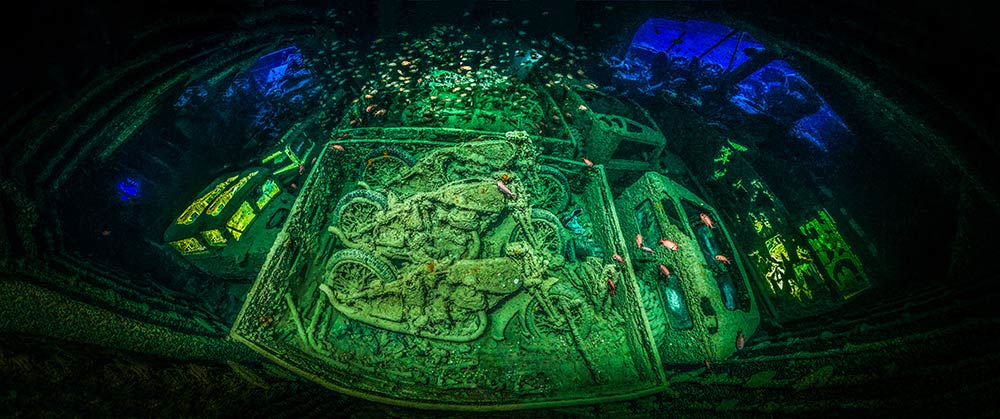
For a few years now I had had this image in mind as the motorcycles on this truck inside the Thistlegorm lie so perfectly together, but you can only barely capture it because the wall is very close and you can’t move backwards enough to capture the whole scenery. As a result I had to create a panoramic image of the same scene to capture the whole cargo deck, including some lights that give the image more depth.
Photograph: Tobias Friedrich/UPY 2018
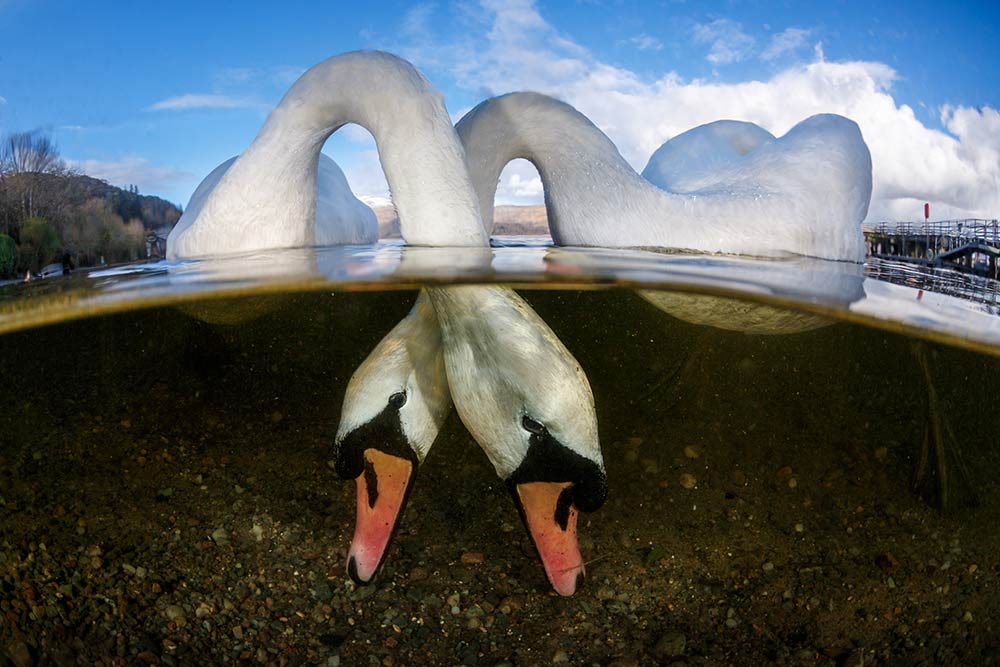
I have always been fascinated by over-under photography, connecting the everyday terrestrial world that we all know with the less familiar underwater secrets. I chose Loch Lomond as the location for this shot due to its idyllic scenery, water access and friendly swans. My initial idea was to frame a split shot of one swan feeding below the surface of the water but when I noticed how comfortable they were around me I was confident, with some patience, I could get that magical shot of the two. It was mid-day, sun high in the sky, I waded slowly into the shallow water, allowing the swans to become comfortable with my presence. When they began searching for food below the water line I just had to wait for that perfect moment of synchronicity.
Photograph: Grant Thomas/UPY 2018
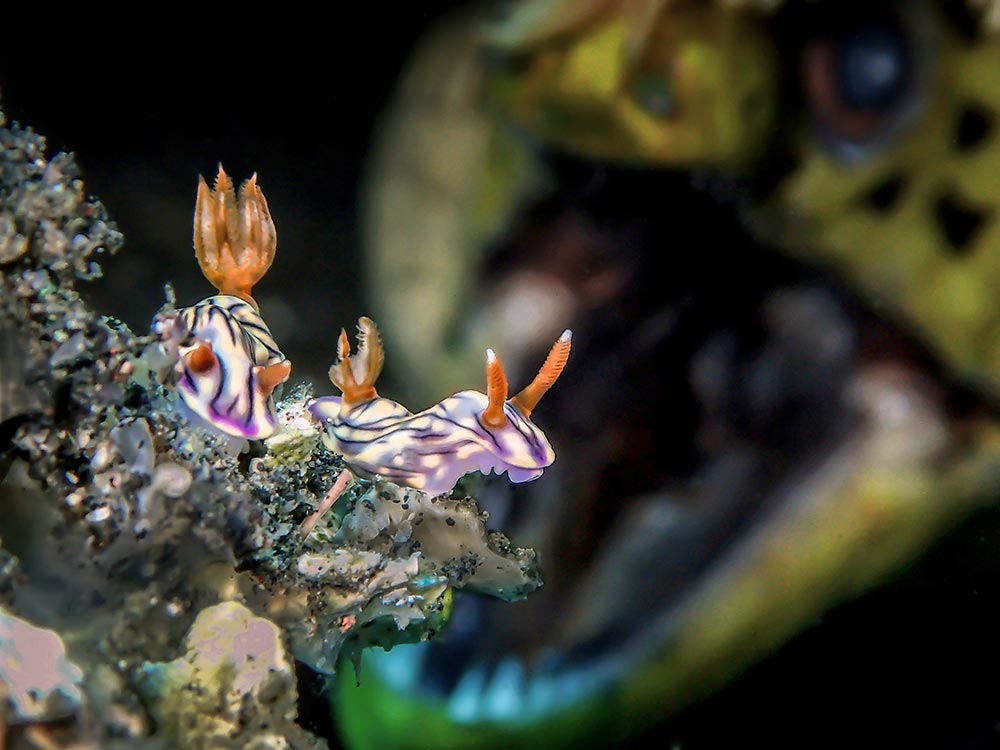
When I was shooting this nudibranch I was focusing on its behaviour to get just the right shot. While this happened a moray eel suddenly appeared out from the blue behind the nudi. I was shocked for a while but decided it would be a great composition. As a few minute flew by to my surprise another nudi appeared right behind the other one maybe to mate. Having both nudis and a moray eel was a double surprise for me. I then decided to wait a while longer for the nudi to be in frame with the moray eel roaring behind. It took about 30 minutes to get this shot and it was well worth it.
Photograph: ManBd UiDive/UPY 2018
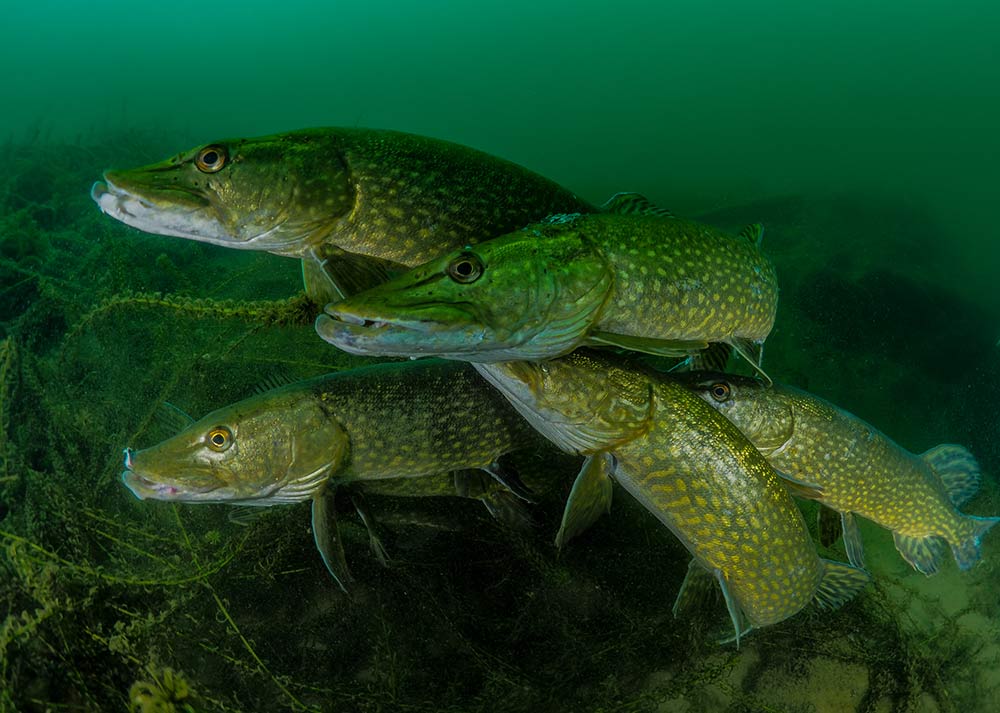
Living in the East Midlands in England is a long way from the sea and as a result, a lot of my diving takes place in the quarry at Stoney Cove, the UK’s National Diving Centre. I love photographing pike and on this particular dive during the Easter holidays, a ‘group’ of males were looking for a mate. Once they found one they pursued her relentlessly and were completely transfixed on gaining her attention. This allowed me to get close in front of the fish, fill the frame and aim to get lots of good eye contact. I was delighted by the results. I hope that I have demonstrated that UK inland diving can throw up some amazing sights that are a pleasure to witness and photograph.
Photograph: Tony Stephenson/UPY 2018
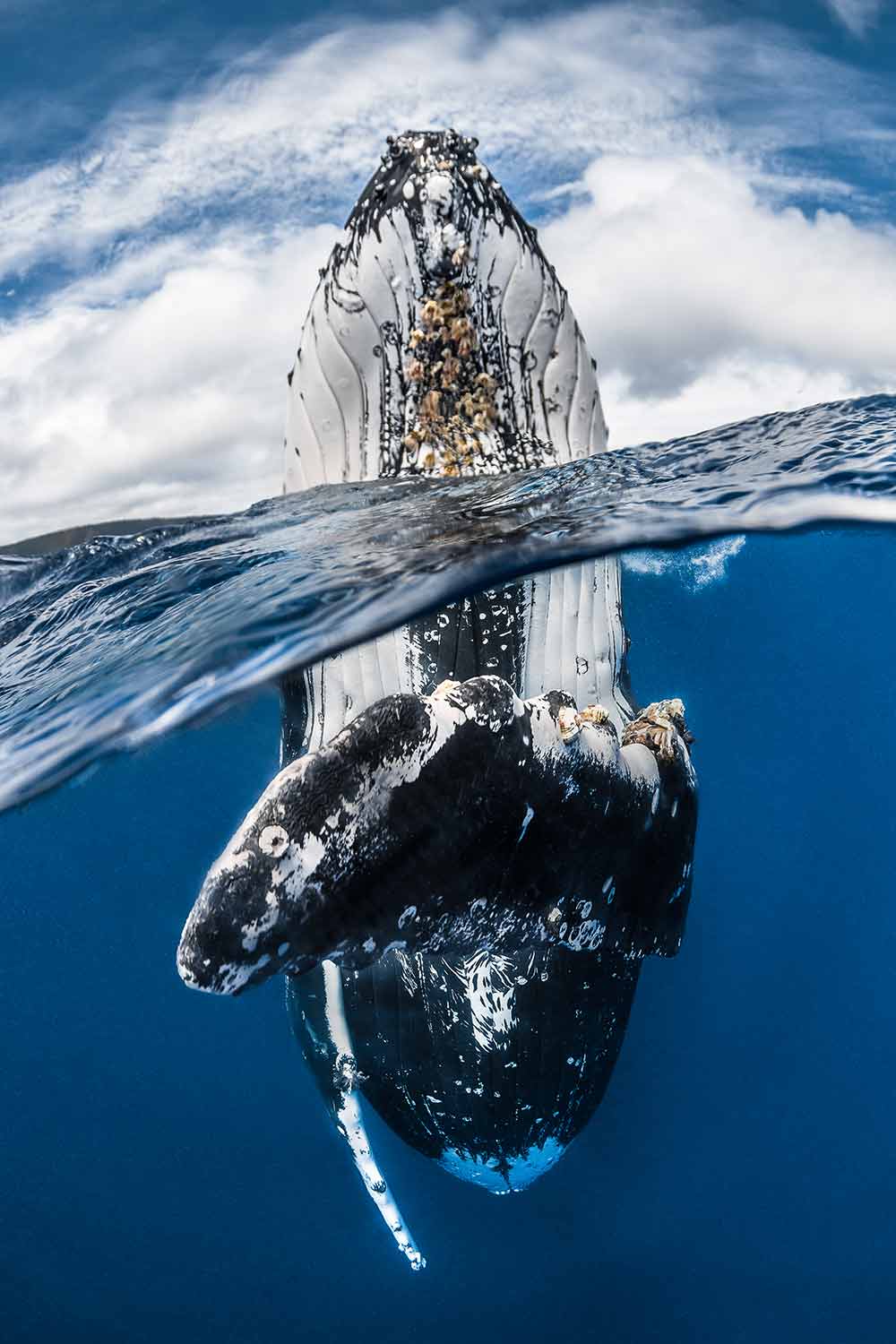
Each year, I go to Tonga to lead a small group of nature enthusiasts to photograph humpback whales. Tonga offers probably the best opportunity to interact with the whales in blue water. This year was very special, with my friends we had some of my best moments in my underwater photographer's life: Very curious and playful whales came to investigate us and adopt the spy hopping posture in front of our masks. Although weighing several tens of tons this mammal showed incredible agility and power in holding itself vertically in the water. It was very impressive and we could feel the power of nature but we were also invaded at the same time a feeling of gentleness. I had the chance to freeze this moment with a split shot to recreate a spectacular moment.
Photograph: Greg Lecoeur/UPY 2018
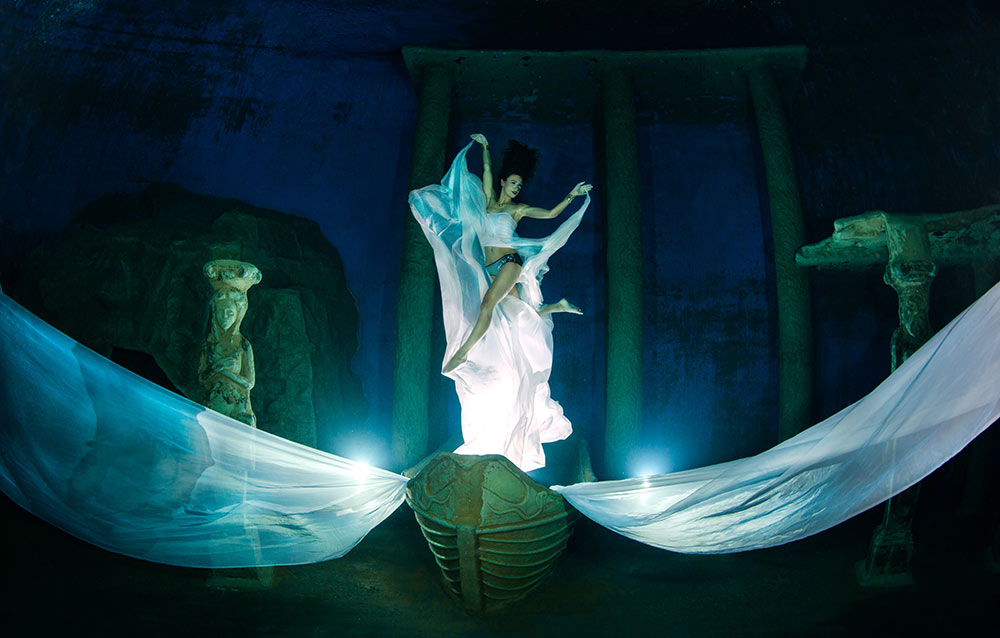
In my style I put great emphasis on the model and on the background. Everything together must build a perfect picture. A picture must be able to tell a story and have a special effect. Another special feature is the effect lighting with underwater flashes which distinguish my photos from others. I love challenges and especially difficult shots. Most photographers are afraid of these challenges but I'm pretty good here, and this is exactly where I want to be. "Only your own Imagination sets the limit to possibilities"! I am working according to this motto.
Photograph: Konstantin Killer/UPY 2018
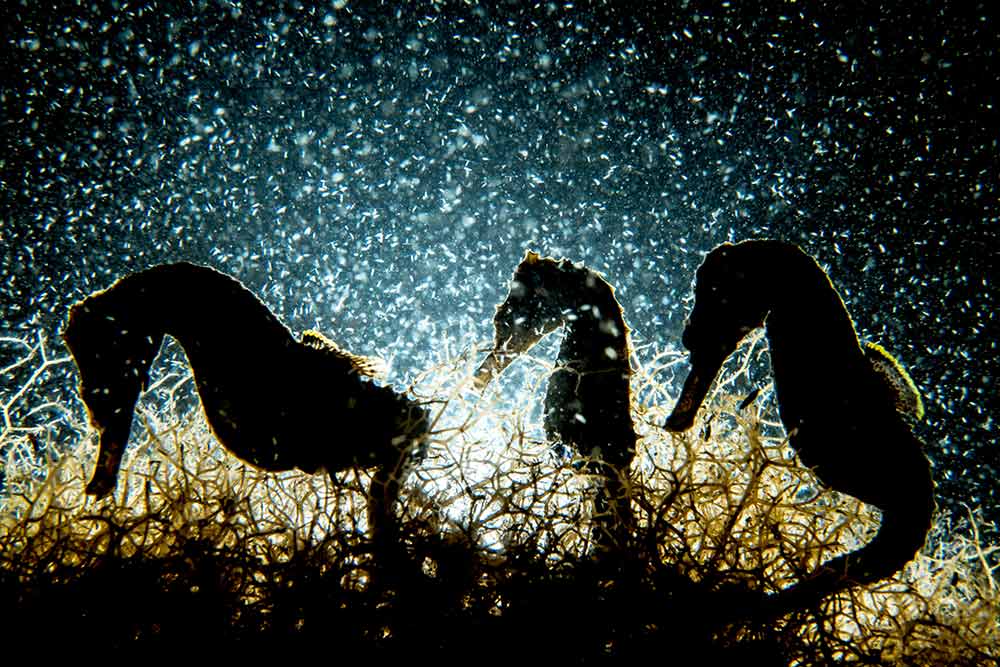
The pond I was in has the highest density of seahorses on Earth, but I’ve never seen three together like this before. I was camping on shore and had all night to shoot with the idea of backlighting a single seahorse, but finding three together was a real gift. I was super careful not to disturb them because they will swim away if they’ve had enough. I had my off-camera strobe and an underwater flashlight on a small tripod which I placed behind and below the trio. Then I waited for them to all turn in way that you could see their silhouette. The sun was setting and as it got darker the plankton really began to pile up. When the seahorses ate some of the plankton I could tell they were relaxed.
Photograph: Shane Gross/UPY 2018
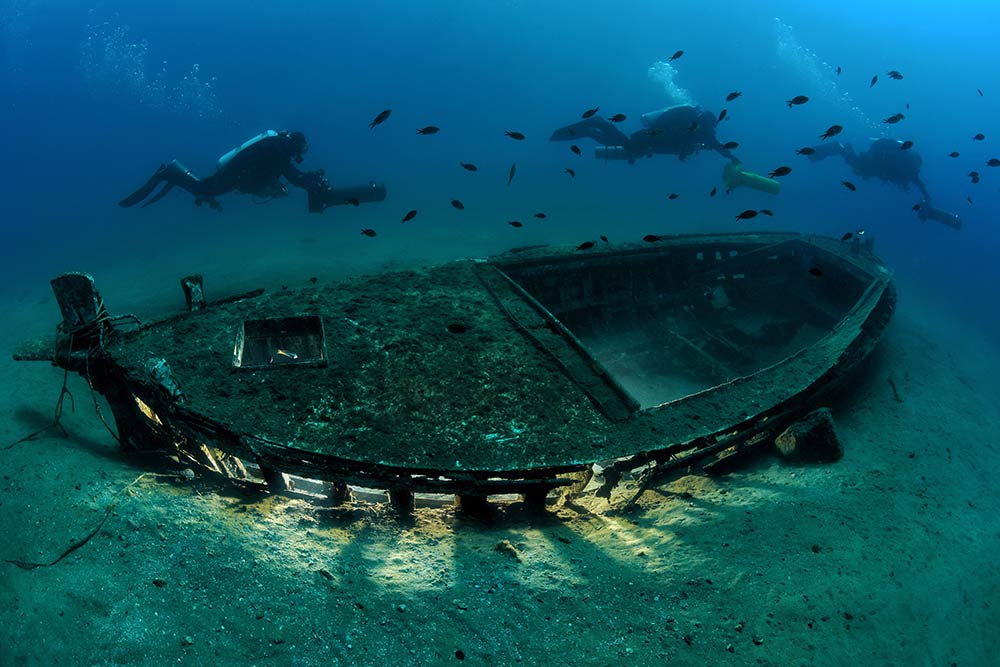
The concept of the picture has been developed on two halves/layers. A half below - radial inside lightening with four flashes wired together. The difficulty was in the upper half, that is, to give the correct position of the three tec-divers with scooters, and to expire the bubbles approximately at the same time. Not to disturb the sediment, there was only one chance to get this shot. As for me, a great team work!
Photograph: Gianni Pecchiar/UPY 2018
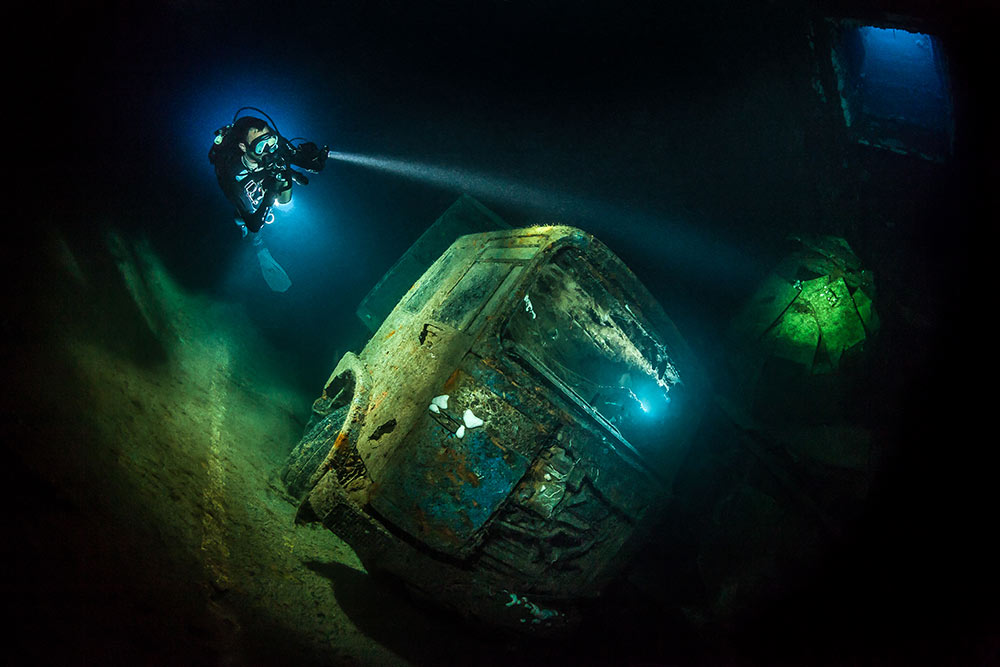
The Zenobia wreck still contains about 100 trucks that sunk over 30 years ago, when the ferry sunk very near to the city of Larnanca. To capture the truck I placed an additional strobe inside the cabin and into my buddies hand to create some atmosphere of this very special dive site.
Photograph: Tobias Friedrich/UPY 2018

This car went through the ice but luckily nobody was hurt. My friend dove the car and told me that it was a perfect photo subject. I drove four hours to get there on a sunny day. We cut a hole in the ice 20 metres away. When I got to the car I could not believe my luck. The car was perfectly placed on a slope and in shallow water so that I was able to get the icy ceiling in the picture. The picture is a manual blend of two images.
Photograph: Pekka Tuuri/UPY 2018
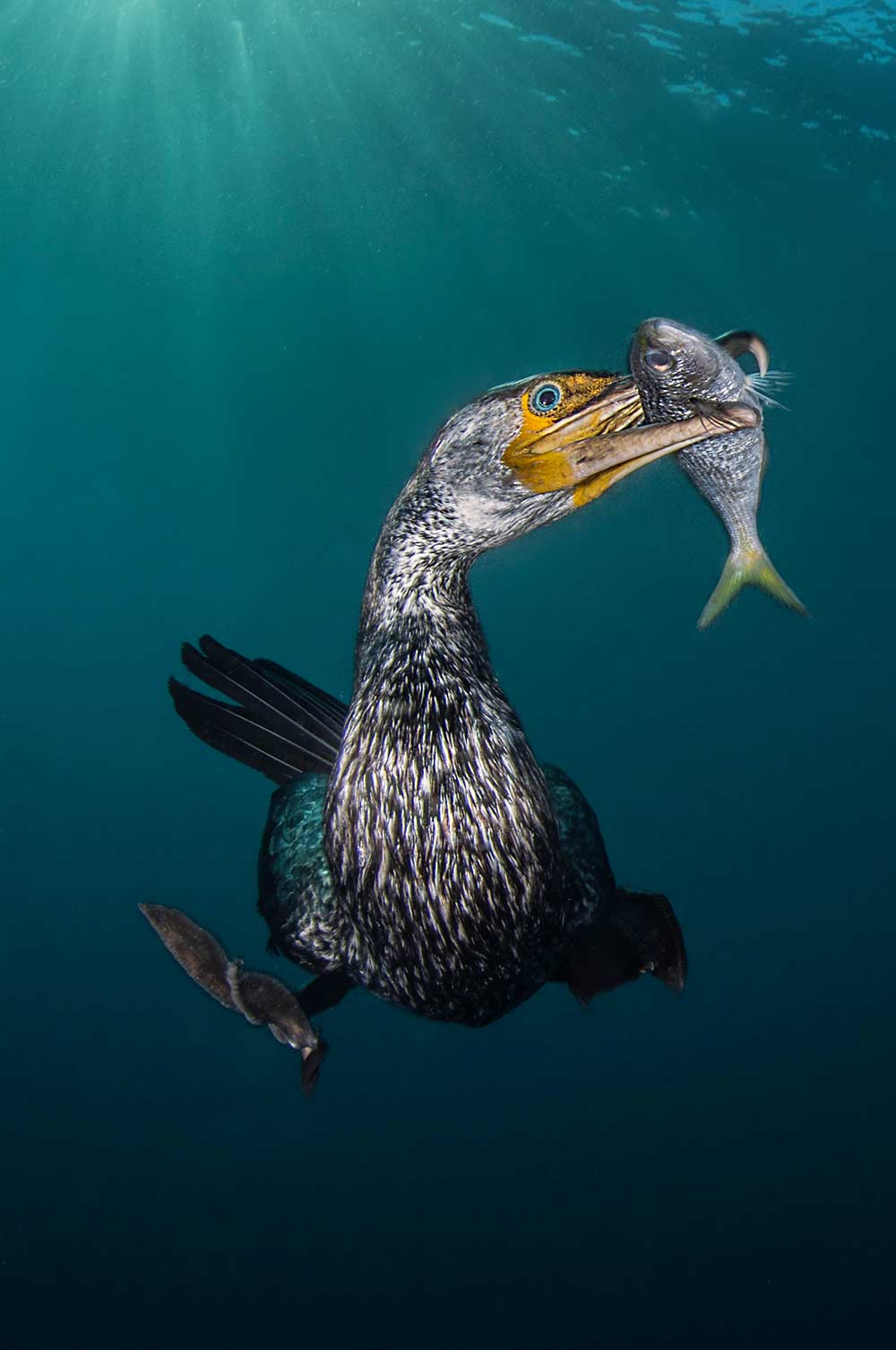
In winter time in the Izu peninsula, the Asiatic cormorant stop for couple of months before moving to China. So this is the best moment for try to shoot this amazing sea bird during diving and fishing. I was in this area and I spent two days in very shallow water from 5m to 8m waiting for the opportunity to take a right moment for have this photos. Luckily four birds for two days stay in this area in search of sardine and don’t care about my presence during his diving session give me the chance to sort it.
Photograph: Filippo Borghi/UPY 2018
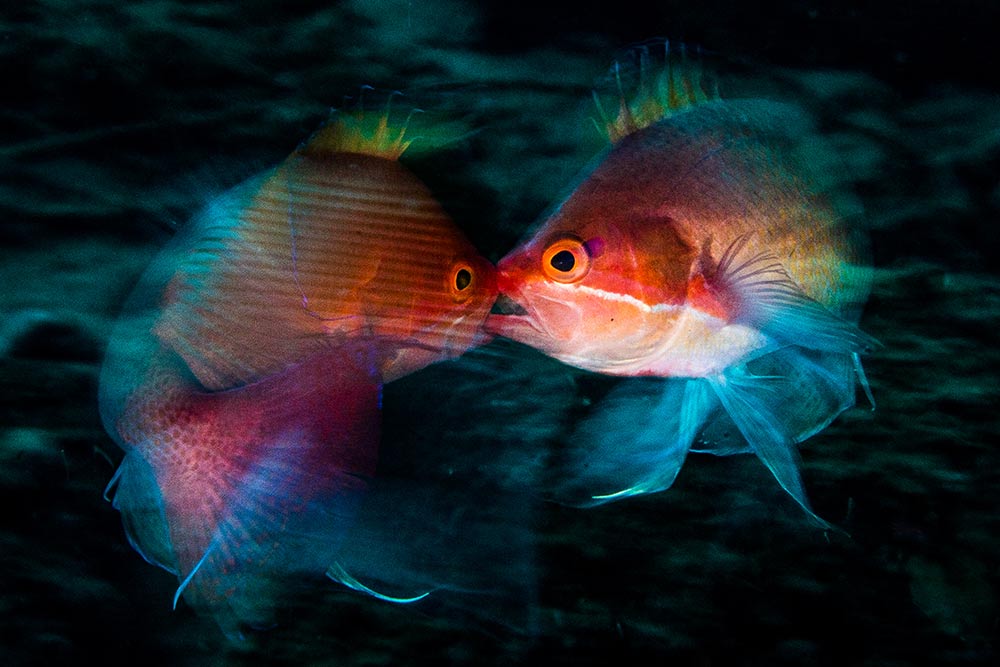
Me and my guide from the dive centre at Mimpi Resort were looking for some Ghost Pipefish when we stumbled on these two lovely fish (Anthias. pseudanthias squamipinnis). The two fish were fighting; spinning around and around and just ignored us.
Photograph: Anders Nyberg/UPY 2018
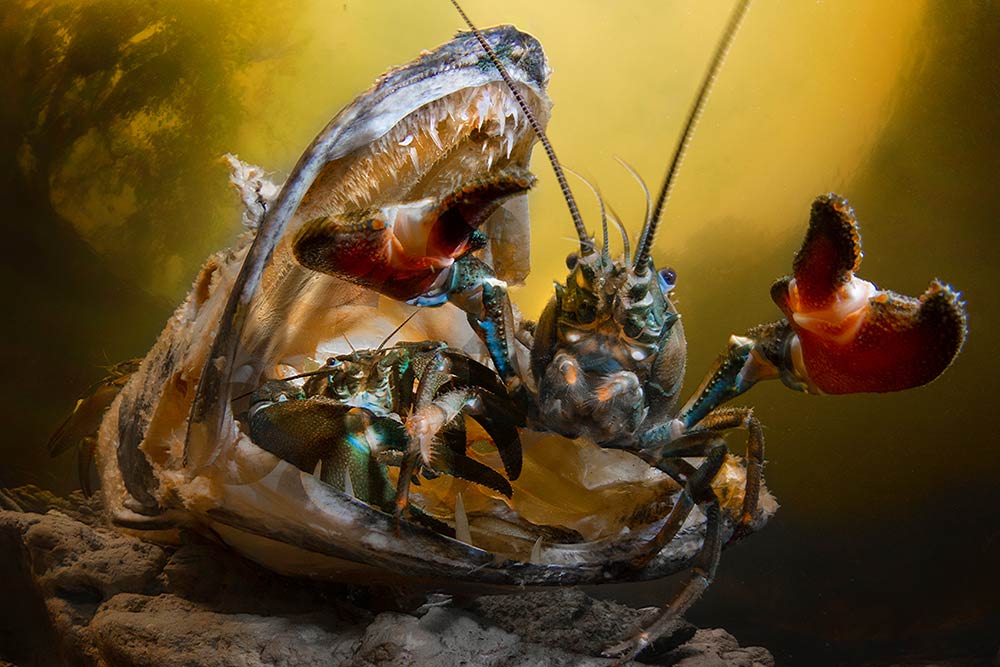
It took a lot of time and effort to get this picture. I backlit the fish with snooted flash and another close to the dome port. In addition I used another flash for overall lighting. I shot the crab feeding for some time and then it attacked the camera dome!
Photograph: Mika Saareila/UPY 2018
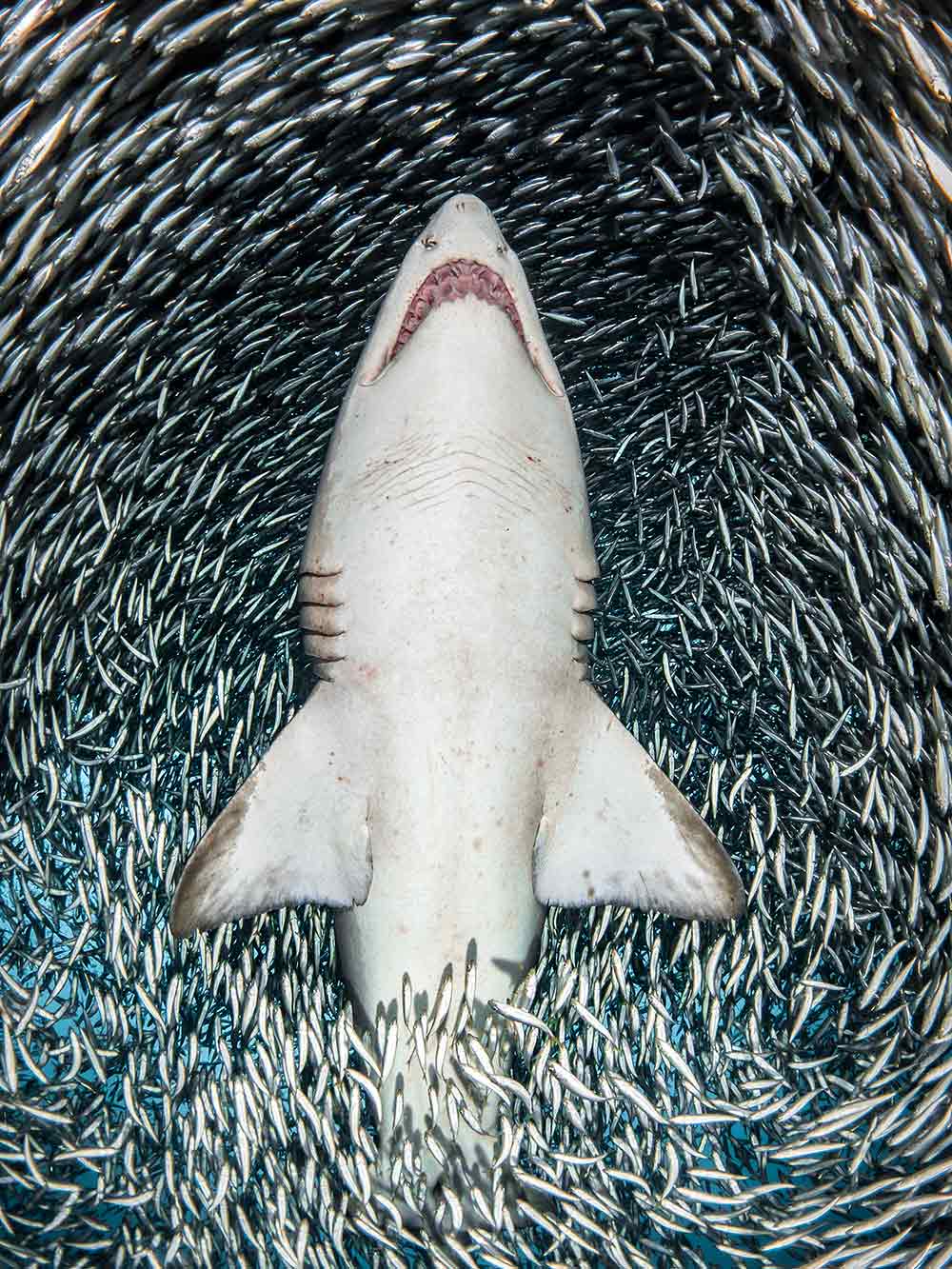
I always look forward to diving the wreck of the Caribsea and seeing the fierce-looking, but docile, sand tiger sharks that frequent the wreck. On this day as I descended to the wreck, I couldn’t believe what I was seeing. Millions of tiny fish, collectively known as “bait fish”, were grouped together in an enormous bait ball above the wreck, with dozens of sand tigers lazily meandering among the fish. As I slowly swam to the center of the bait ball, I looked up and noticed a sand tiger a few feet above me. I swam on my back underneath her, trying not to startle her. As I moved with the shark through the water the bait fish parted way, giving me a clear shot of the underside of this beautiful shark, and also one of the most incredible experiences I’ve had yet as an underwater photographer.
Photograph: Tanya Houppermans/UPY 2018
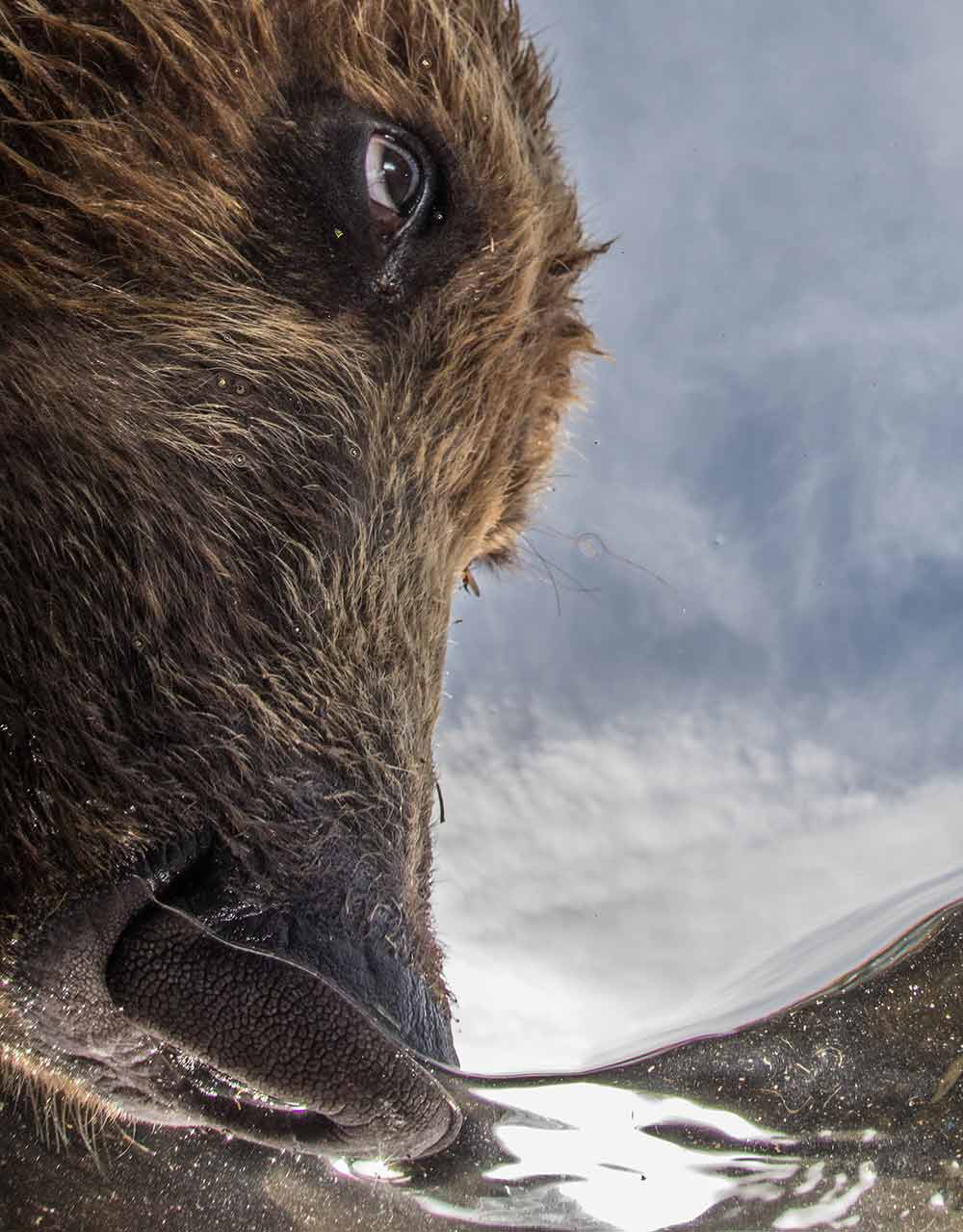
The picture was taken in Kuril Lake – the place with the highest concentration of bears on our planet. The bears here are not hungry (due to the annual mass spawning of sockeye salmon) so they get used to people and do not feel danger from them. I left the camera in the shallow water in the river next to the path that bears regularly pass and hid 8 metres from the camera. This day my camera was spotted by four cubs, which were walking along the path with their mother. The mother stopped and began to look out for the fish in the river, and the cubs saw the camera, they were very curious and began to play with it.
Photograph: Mike Korostelev/UPY 2018
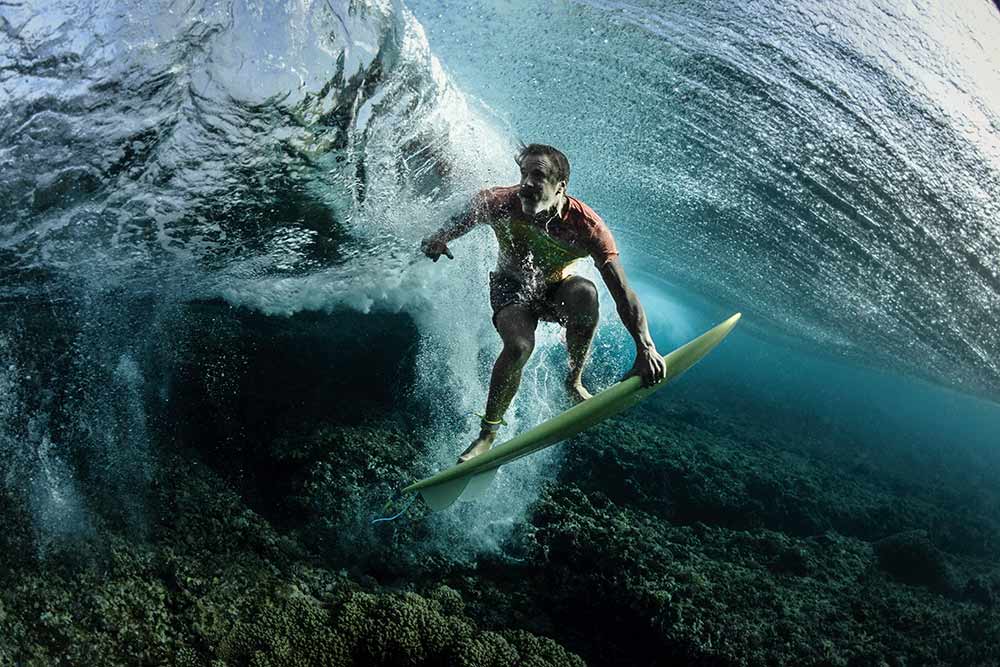
I have been travelling with musician and professional surfer, Donavon Frankenreiter for about four years now. On a recent surf trip to Tavarua, Fiji, I captured this shot of Donavon playing under the wave at Cloudbreak. When shooting surf photography I love being under the wave. There is just so much more going on there. Seeing the power of the wave from below and watching the surfers dive below it. It’s the side of the wave that you don’t get to see from the shore.
Photograph: Rodney Bursiel/UPY 2018
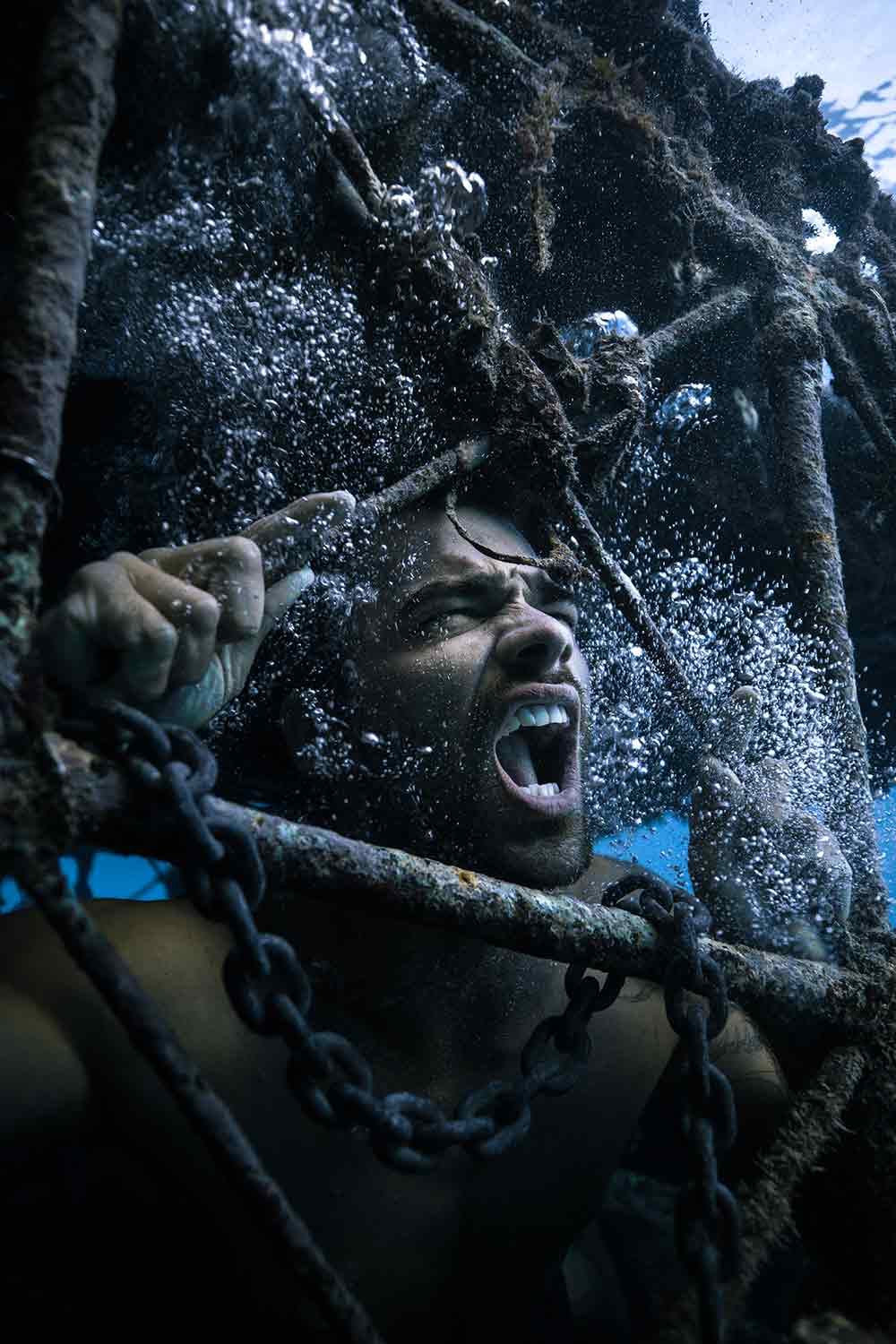
My friend David and I created this image at an abandoned coral observatory off Nassau, Bahamas. This site had the perfect structure we needed to portray the idea of underwater bondage and imprisonment. With the jail cell like design of the overhang barriers of the dilapidated structure, it made the perfect underwater studio. It took about an hour and a half to create the shot with the use of a scuba regulator for assisted breathing and bubble making for special effects. The challenge was to time the perfect moment for the bubbles to be arranged around David’s face. The result is something we are both proud of.
Photograph: André Musgrove /UPY 2018
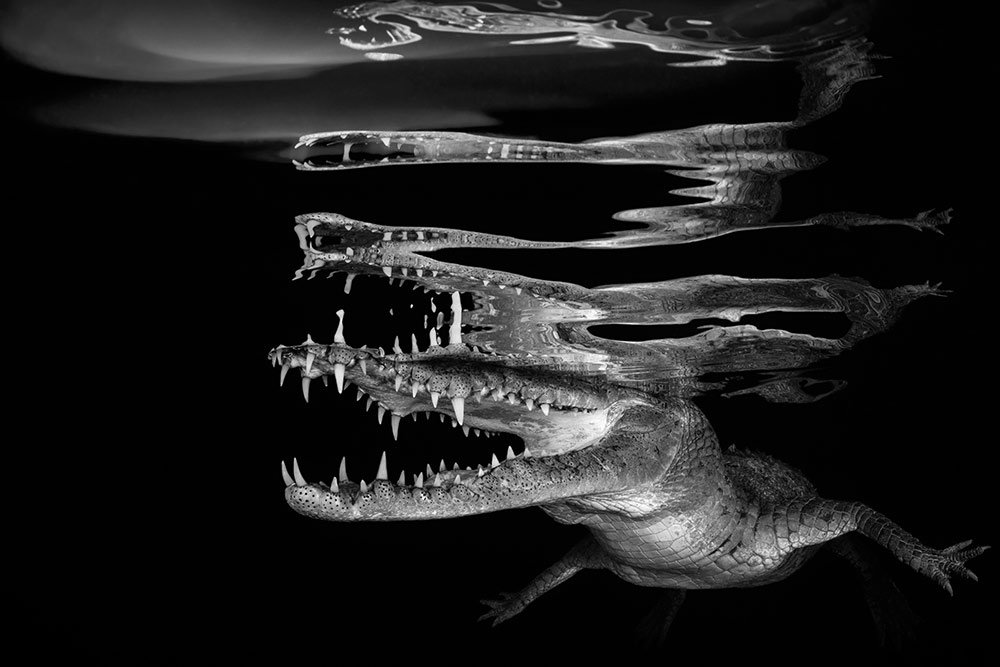
When diving was finished for the day, I asked the dive master to take me back again to a place, where seawater crocodiles are usually seen. I wanted to shoot them in low evening sunlight, when the sky turns into warm colours. When we arrived, the sun was already on the horizon and it was very dark in the water. I pushed ISO settings high to get some warm ambient light into the picture and set the power of my strobes low. Fortunately the crocodile was very cooperative and since we were both very calm, beautiful reflections appeared on the surface. I shot many images with his reflections and this one was my favourite.
Photograph: Borut Furlan/UPY 2018

Escaping New Zealand winter for a magical week in Tonga’s underwater dreamland dancing with whales, my wife and I spent 5 days and nights at sea, sailing the Ha’apai islands & swimming with humpbacks. These two adult humpbacks had such a connection with us in the water, literally “dancing”... it was the most wild & incredible thing I have probably witnessed in my entire life. I hope that my photography brings out the ocean conservationist in all of us and helps to spread awareness to help save the ocean!
Photograph: Simone Matucci/UPY 2018
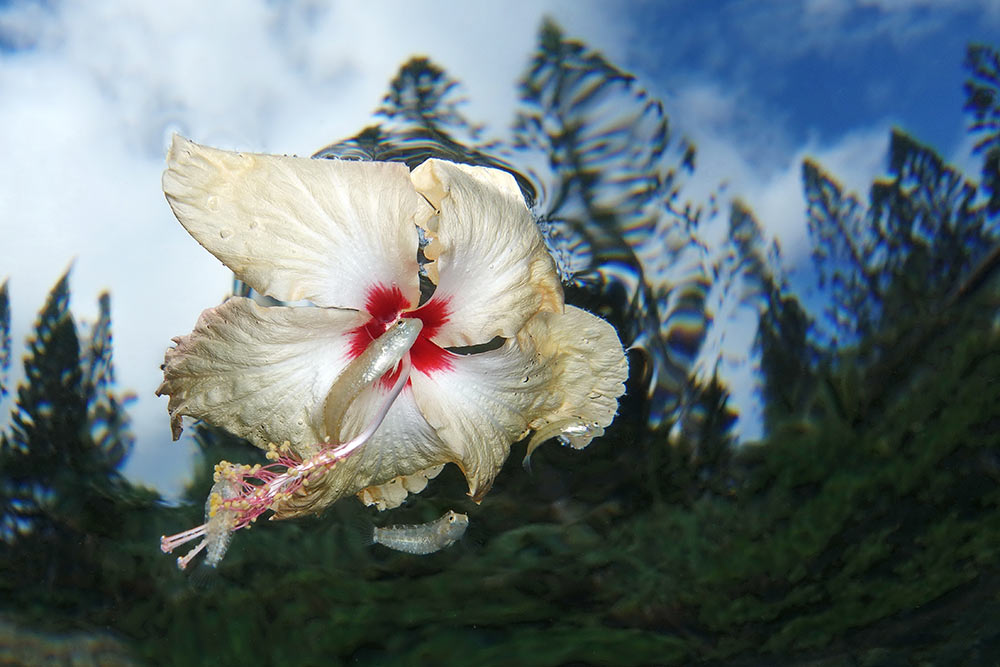
Having been a free diving underwater photographer for eight years, I swim many hours, every week looking for uncommon subjects to shoot. This picture shows three blennies that gather by the dozen under a sheltered spot. In this image, they are hiding under a floating hibiscus flower.
Photograph: Jack Berthomier/UPY 2018
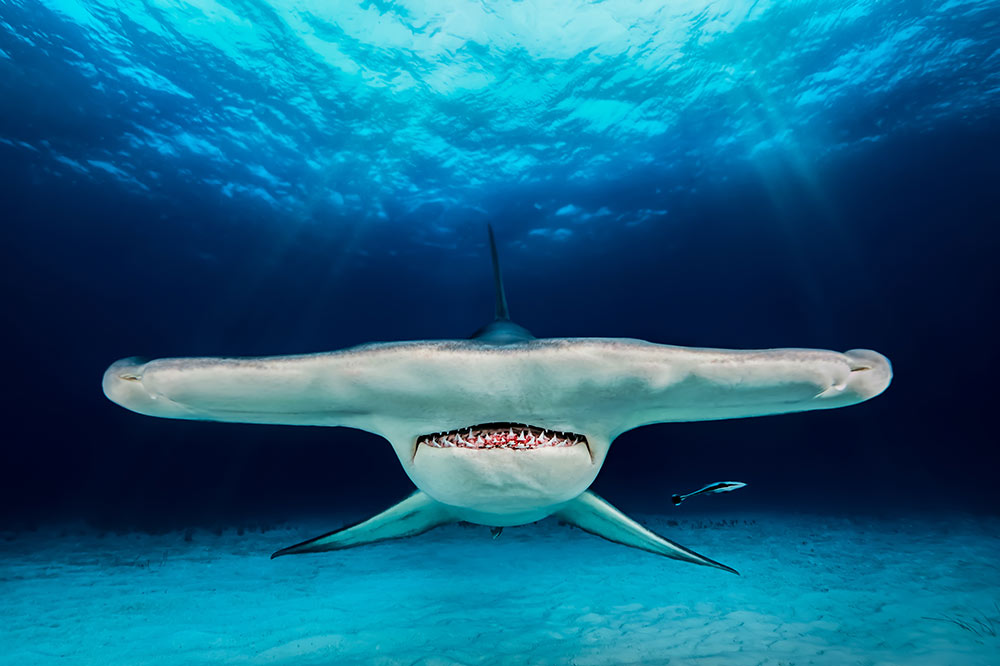
It was the last day of the Enigma Team shark expedition to Bahamas. The last day and I was still missing a shot I came here to take. We went down. The day before there was a storm and we did not see anything. But they were back. Glorious, mighty, curious but shy four metre long ladies. The Great Hammerheads were slowly circulating around us. It was my last chance. The last opportunity to do what I had in my mind for months. "Stay calm, be patient" was constantly echoing in my mind. Sitting on a soft sandy bottom, facing against the sun I could have only waited. And there she was coming directly at me...
Photograph: Jacob Degee/UPY 2018
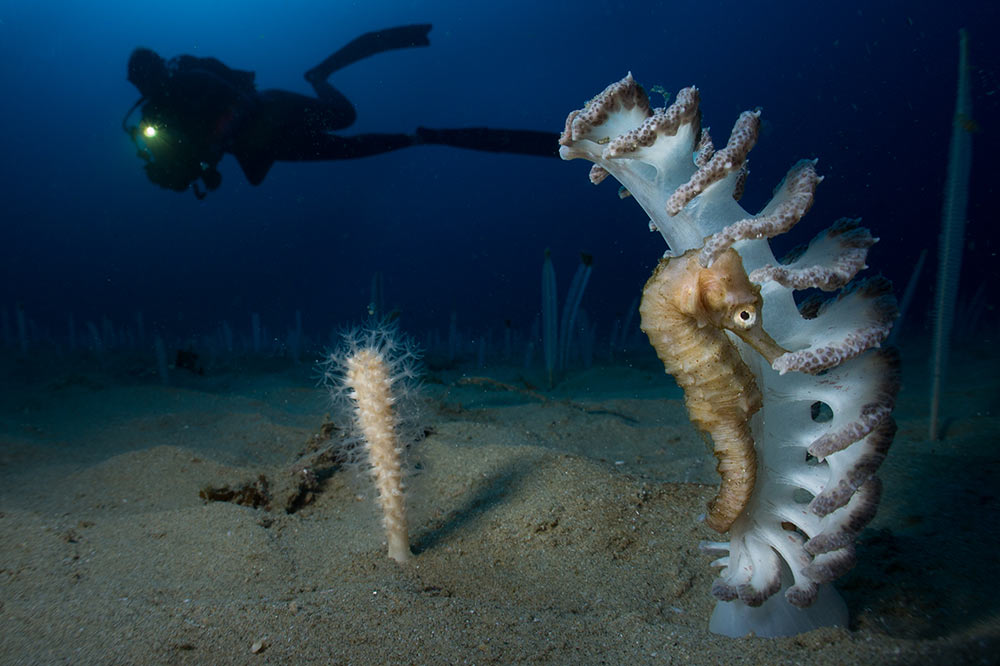
Since I started to take photos I have worked hard to photograph smaller creatures with my wide angle lens. This is not that easy as it’s hard to get the lightning right. Some times the results are rewarding, as in this case, where I managed to captured the seahorse and my wife in the same photo. She actually photo bombed my scene! She is lucky it turned out well...
Photograph: Rupert Cornelius/UPY 2018
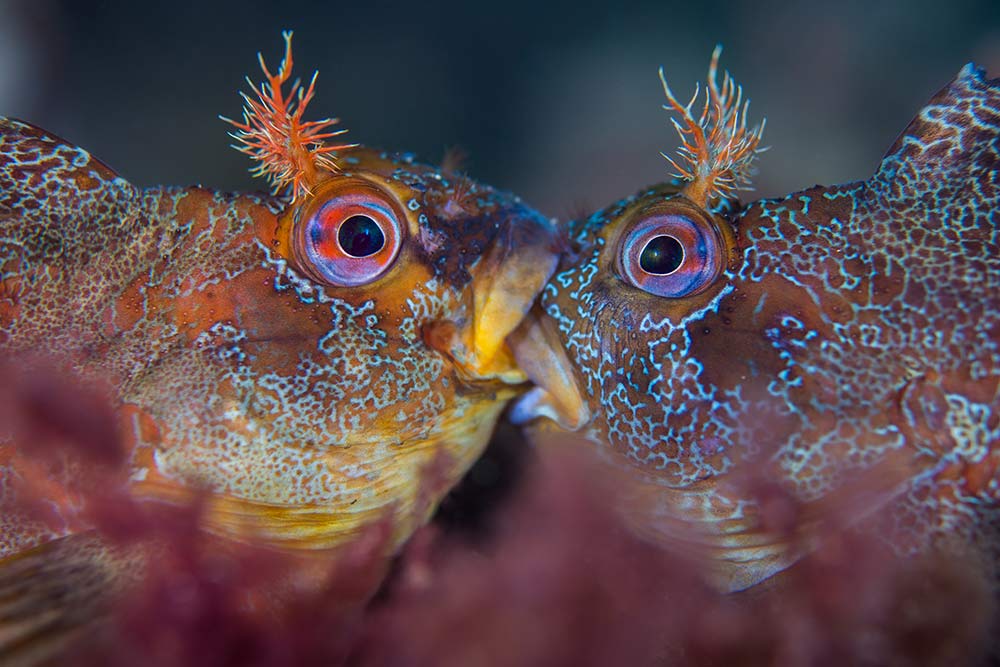
Despite appearances, these two Tompot Blennies are not kissing but engaged in a ferocious battle over mating rights. The British summer is mating season amongst Tompots and competition is fierce. I went diving under Swanage Pier in search of these charismatic fish and was delighted to encounter one with the ornate, blue facial markings designed to attract a partner. To my surprise and wonder, he was soon joined by another male and they started tussling. At one point, the dust settled and they remained motionless, jaws locked together, just long enough for me to capture this image.
Photograph: Henley Spiers/UPY 2018

I had a free weekend, so took-up a last minute space on our club trip to The Farne Islands. This picture was taken on the second dive of the day, when my 2 buddies acted as seal magnets and we had some glorious encounters. This seal obviously had an itch to scratch, as at one point he lay on his back waiting for his belly to be rubbed and as we were leaving him he was giving his tail a good scratch, pulling some interesting shapes in the process and which must have led to the satisfied grin he appears to be sporting!
Photograph: Vicky Paynter/UPY 2018














